Gathering or Opening Ceremony
Read the following quote out loud:
"People, please realize that we should never just think we know who or what someone is based on their economic status, ethnicity, gender, etc. We need to start learning more about each other rather than relying on statistics and stereotypes."
Tell students that the quote is from a social media post about how the media has portrayed Michael Brown, the black teen who was shot and killed by a police officer in Ferguson, MO.
Ask students to reflect on the quote, either in a circle or a regular classroom setting. Then ask the question: How does the quote relate to the events in Ferguson, Missouri?
Michael Brown's Image in Mainstream Media
Share with students that on August 9, 2014, unarmed black teen Michael Brown was shot dead by white police officer Darren Wilson, in Ferguson, MO, touching off weeks of protests. After the killing, a particular image of Brown prevailed in the media. In the photo, he towered over the camera flashing a sign that some people interpreted as gang-related. Other, less prominent images show Brown in a cap and gown at his high school graduation and one in which he looks like a younger, some say "innocent looking," teen wearing headphones (see below).
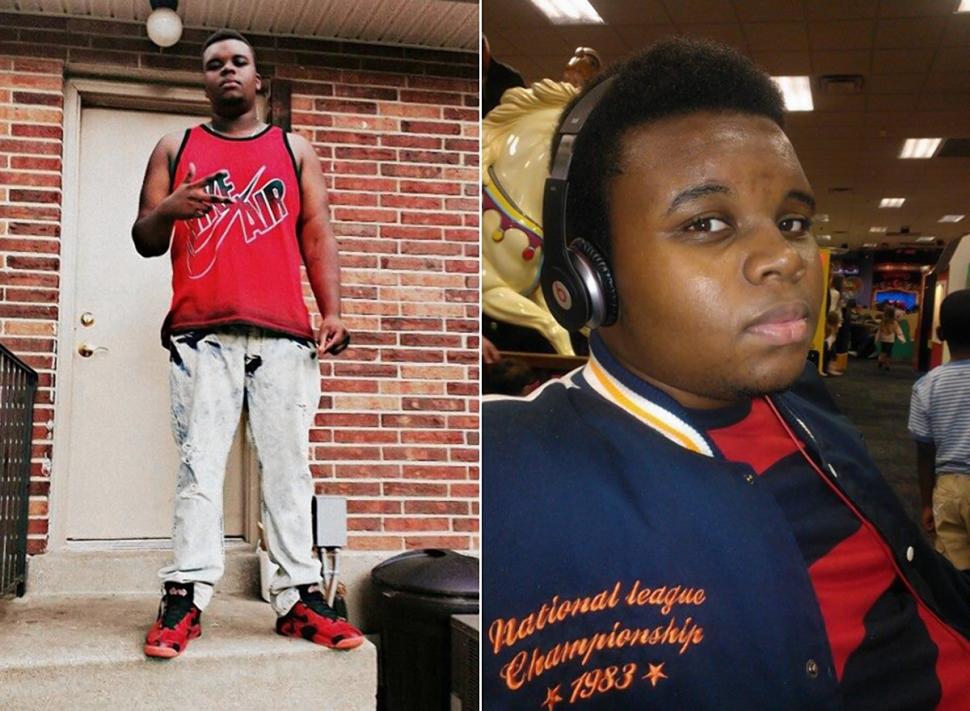
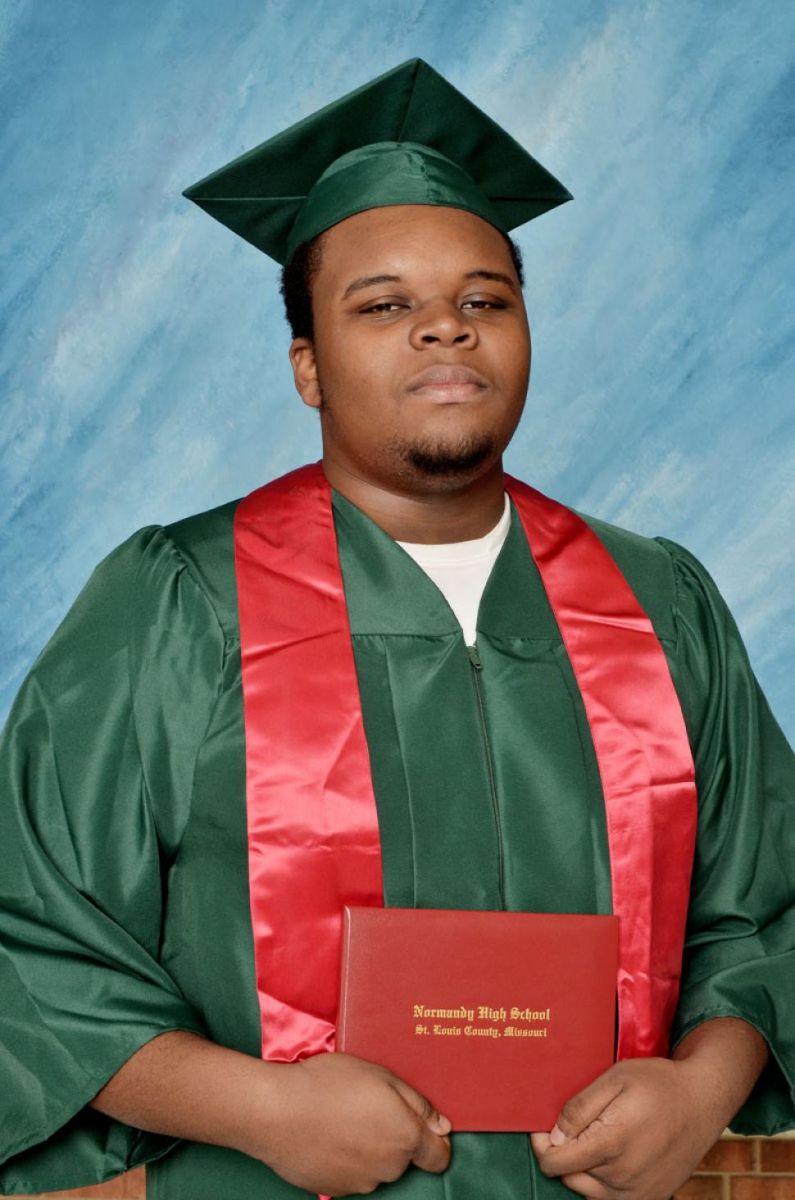
Invite students to look at and compare these images. Ask them to consider the following questions:
- If a picture is worth a thousand words, what might be some of the words you'd use to describe the pictures of Michael Brown that the media have used since his shooting death?
- Do you think the image of Brown standing over the camera in light jeans, a red shirt and flashing some kind of sign "tells a different story" than the image of Brown in the blue jacket with headphones or the image of Brown in a cap and gown? If so, how? What story does each image tell?
Share the following excerpt from an Al Jazeera news story with students.
"Recent debate over the types of photos used to portray black shooting victims exposes a widely held bias that assumes they are criminals, rights advocates said this week as many in the African-American community called attention to what they say is mainstream media misrepresentation in the wake of yet another police shooting of an unarmed black man.
Some experts said such media portrayals reveal a pattern of criminalizing black bodies in the U.S. media.
Criminalization occurs when images chosen by media consciously or unconsciously create a justification for why people of color are killed, he said." (Renee Lewis, August 14, 2014, Al Jazeera)
Ask students:
- What are your thoughts and feelings about this excerpt?
- How does it relate to what you just shared about the different images of Michael Brown that the media has used in recent weeks?
- What do you think the term "criminalizing the black body" means?
Social Media Response: "If They Gunned Me Down"
In the aftermath of Michael Brown's shooting death, young people of color turned to social media to express their anger and critique how the mainstream media portrays black victims of crime by all too often using stereotypical and prejudicial images. A powerful Twitter feed and Tumbler blog were created, featuring different images of the same person asking the question "if they gunned me down which picture would the media use to portray me?"
If computers are available in your classroom:
Give each student six post-it notes. Then ask students to break into small groups. Ask each group to visit the Twitter or Tumblr site below to look at the tweets or posts. Ask each group to select one that they find particularly powerful.
See:
Twitter #IfTheyGunnedMeDown or
Ask students in each group to discuss why this particular tweet or post is powerful to them. (If you're doing this as a circle, invite students to use a talking piece in the small groups like they would in the larger group). Students should consider the following questions:
- Why did you pick these images?
- Are your thoughts and feelings different about the different images? Why?
- If you were to describe each image using three words only, what words would you use?
Ask each student to write on their post-it notes the words they associate with each of the images. Then have students consider:
- Are some associations more positive, while others are more negative?
If computers are NOT available in your classroom:
Ask students to break into small groups, and give each group a copy of Handout #1 (at the bottom of this lesson, or view as a PDF), as well as the post-it notes. Ask each group to choose one of the posts of images to work with. Discuss why this particular tweet or post is powerful to them. Have students consider the same questions as above, and have them create post-its of words they associate with the images they chose.
Sharing our words
Next post two pieces of chart paper, one on either side of the classroom, on which students can post their words. Instruct students to put their positive associations on one sheet and their negative associations on the other.
If you're doing this lesson as a circle, ask students to post their words on the floor around the center piece. One side of the center piece will be dedicated to the more negative associations, the other to the more positive associations.
Once all the words have been posted, ask students to take some time to read the words, either on the chart papers or on the floor around the center piece. They can get up if needed, but ask them to do this in silence as they take in the words.
When students are back in their seats ask them some or all of the following questions:
- What are your thoughts and feelings about the words you just read (on the flipcharts or around the center piece)? Why?
- Was it easy to distinguish between the negative and positive associations? Were there any words that were more ambivalent?
- Consider the particular images your group chose: Was there a clear divide between the associations you had with one image versus the associations you had with the other? Why do you think that is?
- Why do you think the Twitter feed and Tumblr blog "IfTheyGunnedMeDown" were created? What is the message people who post their pictures are trying to convey? How do you feel about that?
Media Framing
Give students Handout #2 (below, or view as a PDF), "Three Segments on Media Framing," and ask them to read it. Then discuss the reading as a class, asking the following questions:
- What are your thoughts and feelings about these segments? Explain.
- What do these segments tell you about how black victims (and white suspects) are often represented in the media? How do you feel about that?
- How do you think this might relate to George Zimmerman's behavior and Darren Wilson's behavior?
- How do you think family members of the victims feel when needing to prove that their lost loved one was "one of the good ones?"
- What does this imply about "the bad ones"?
Invite students to go back to their small groups and to the images they worked with in the previous activity. Then consider the following question:
- If the mainstream media were to use three words only to describe your two images, what word associations do you think they might use?
Provide students with additional post-its to write down the words they believe the media might associate with these images.
Invite students once again to contribute their post-its either to the chart paper sheets, by posting them underneath their own word associations, or to the center piece by posting them to the outside of the word associations already there.
Ask students once again to take some time to read the words in the silence. Then ask the following questions:
- What are your thoughts and feelings about the words you just read? Why?
- How do your words compare to those you think the media might use? Why do you think that is?
Closing or Closing Ceremony
Ask students to share one thing they'd like to say to the media based on today's lesson.
Extension activity: The Four I's of Oppression
For homework, or the next time you convene, ask students to read Handout # 3 (below, or view as a PDF). When you gather your class consider discussing some or all of the following questions:
- What are your thoughts and feelings about what you read?
- Was there anything new or surprising about what you read? If so what?
- Think about the events in Ferguson, Missouri, in the wake of Michael Brown's death. How do these events relate to each of the four I's?
- Where do you think you fit into this system? How do you feel about that?
- Talk about a time in your life that you've had experience with one or more of the four I's. What was that like?
Now have students consider a discussion that took place on If They Gunned Me Down about white privilege.
One person posted this comment:
"Can white people stay out of the #IfTheyGunnedMeDown tag? This isn't about you. Stay in your lane. Let black folks heal."
- What are your thoughts and feelings about this post?
Other posts have read:
"What really frustrates me is the white people who participate in the IfTheyGunnedMeDown hashtag, with a picture of them and their mom then them flicking off the camera in a hoodie. UNLESS they understand the media would choose the picture with their f[***]in mom. Because if they don't, they don't understand what the hashtag means or situation at hand at all. :/"
"White privilege is taking a serious conversation that black people are having about our portrayal in the media and making a joke of it which my way of saying a hearty ‘F[***] You' to all the white people treated the ‘If They Gunned me Down' tag on twitter as a joke. It must be nice to be so far removed for worry of whether or not your character would be accurately presented that you can make a joke of those who worry about theirs."
"I'm not trusting of white people participating in the #iftheygunnedmedown Twitter trend not only because a lot of them are making a mockery of it, but also because this is an issue that they benefit from. If it's anything that they need to be doing it's discussing their position of privilege and how they can use it to productively criticize media coverage of police brutality."
- What are your thoughts and feelings about this?
Another person posted this comment:
"Due to my race and privilege, the media would consistently run first photo. As a white American I am granted very different standards than the ones so often set for minorities in this country. As a white American, I am granted the privilege to continue to feel the freedom to speak out against these injustices without fear of retribution. As white Americans, it's our duty as human beings to listen to the stories of minorities before we begin to jump to conclusions about things we wouldn't understand. "We all bleed red, but whose blood is on the streets?" #mikebrown"
- What are your thoughts and feelings about this?
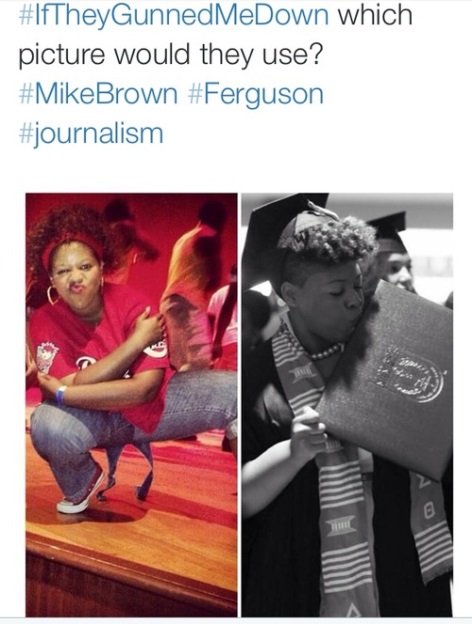
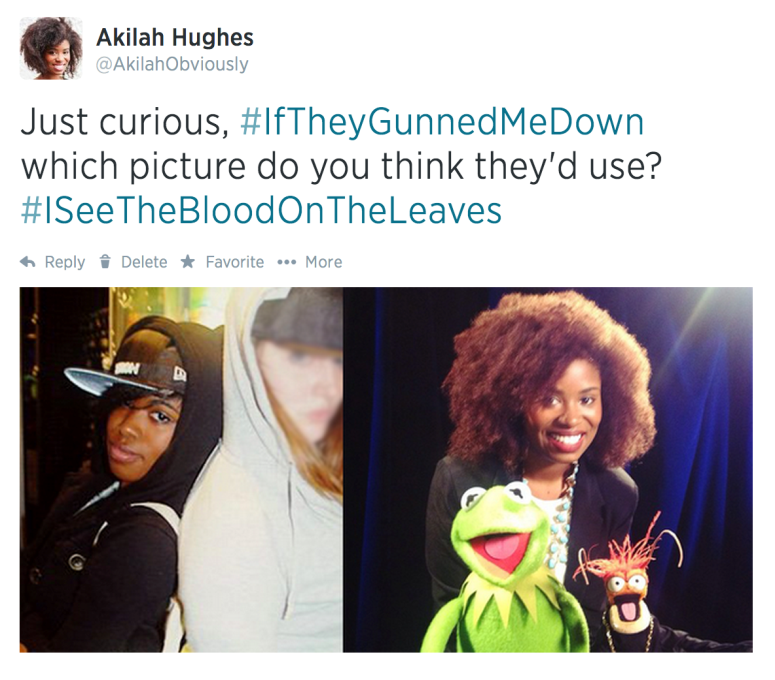
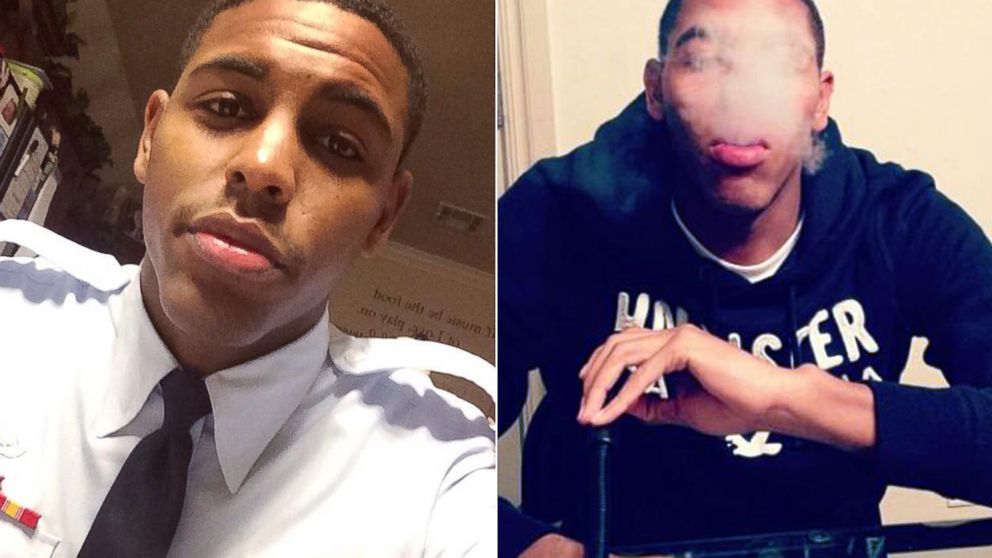
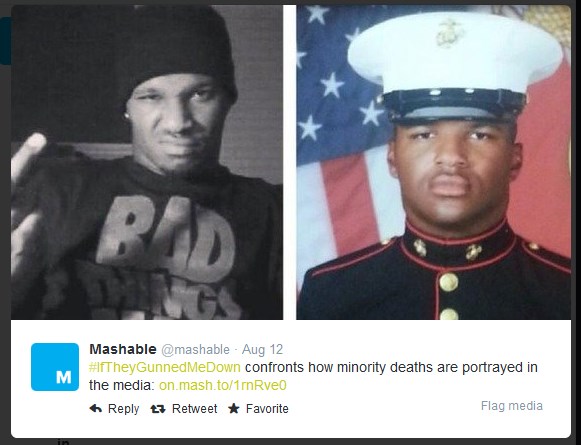
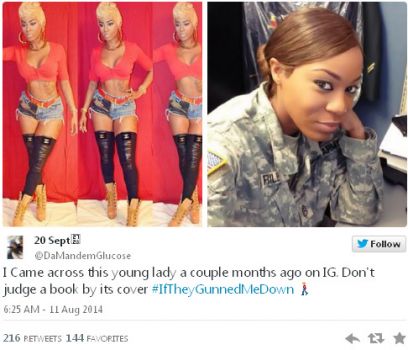
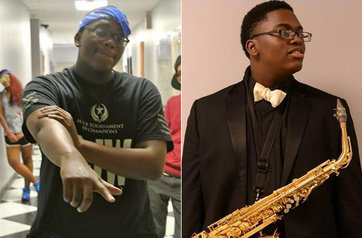
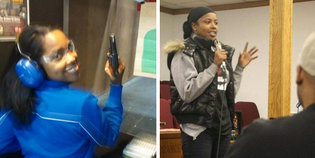
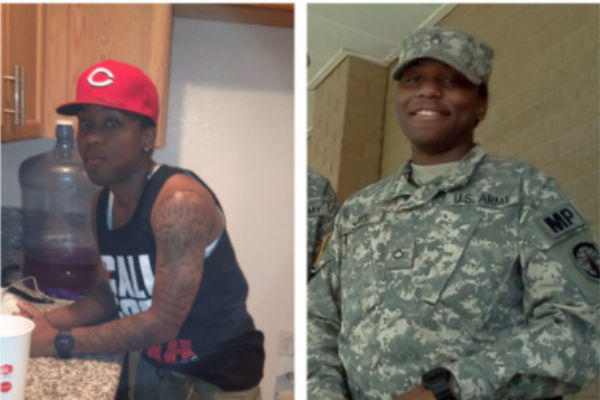
HANDOUT 2
Three Segments on Biased Media Framing
While Brown had no criminal record, recently graduated high school and was on his way to college, many headlines and published images didn't reflect that.
Some stories suggested Brown was possibly a "gang banger" and others focused on reports that he allegedly struggled with police before the shooting. ...
The media has a long history of portraying white suspects in the news in a better light than Black victims.
James Holmes, the white man behind the movie theater shooting in Colorado in 2012, was referred to as a "genius." Some outlets called him "misguided" and headlines focused on how his friends and family said he "didn't seem like the type" to do something so horrific.
Holmes attended the midnight screening of the Batman movie, The Dark Knight Rises, before setting off tear gas in the theater and firing into the crowd. A dozen people were killed and 70 were injured.
On the other hand, headlines about Trayvon Martin, the Black teenager who was shot and killed in 2012 by volunteer neighborhood watch George Zimmerman, focused on disciplinary issues that Martin had in school. (Emphasis added)
From the National Journal
After Trayvon Martin, an unarmed, black 17-year-old, was killed by a neighborhood watchman in 2012, commentators tried to justify his death with photos of Martin throwing up "gang signs"—which amounted to photos of him flipping off the camera, smoking, and wearing a backwards baseball cap—as evidence that Martin was a "thug."
Similarly, the shooting of Michael Brown by a law-enforcement officer has undergone media thuggification.
From Al Jazeera America
"It's playing into the bias exposed after Trayvon Martin was killed. Even though young white people wear hoodies too, [George] Zimmerman saw someone who was ... ‘up to no good,'" said Rashad Robinson, executive director of Color of Change, a group aimed at strengthening black Americans' political voice. ...
Many African-Americans feel as if they have to prove they are "one of the good ones" in order to gain sympathy in mainstream America, he said, noting that Brown's mother told reporters after his death that her son had graduated and was headed for college.
"They have to earn the right for the benefit of the doubt or to be humanized or to gain empathy for their family," Robinson said. "This is how the media views the humanity of black people, their dignity in life and in death."
Others agreed and said the United States has a long history of negative media representations of African-Americans. ...
"The traditional narrative is that black people are no good — they're out there selling dope and shooting each other. And Trayvon, they said he was a little thug ... but it doesn't matter. The Constitution said you can't go shoot someone on suspicion."
From Tumblr "IfTheyGunnedMeDown"
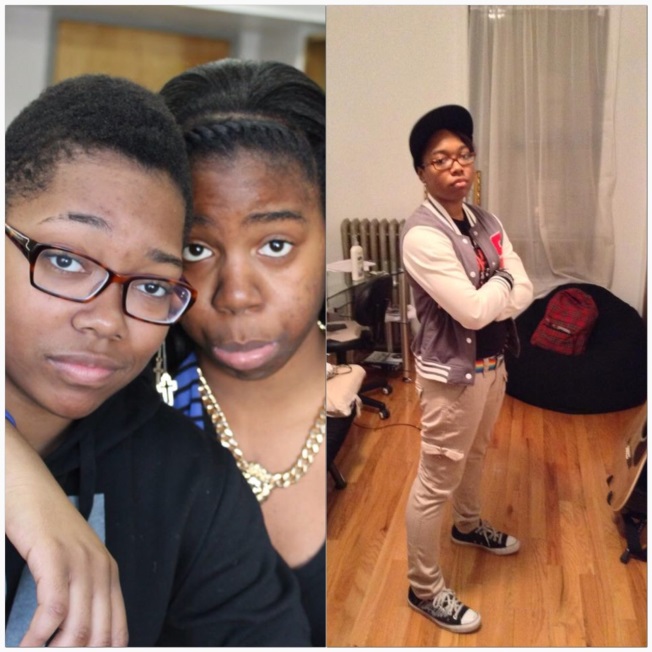 If they gunned me down, which picture would they use?
If they gunned me down, which picture would they use?Would they paint me as a kid who had trouble in school? Who was struggling with mental illness and was probably unstable and probably running the streets at all hours of the night?
Or would they paint me as a kid who was loved in school by teachers? A kid who had trouble, but did their best? A kid with lots of friends and family?
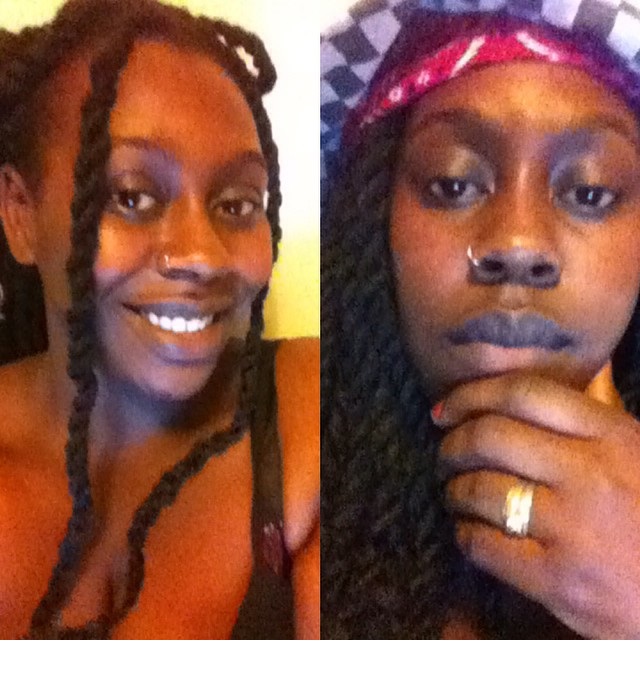 #iftheygunnedmedown Which picture would they use? Would they mention my troubled past or that I occasionally smoked weed ...or would they mention that I was a responsible university student interested in creating a society in which young people aren't getting gunned down due to our fears , judgment , and lack of understanding.
#iftheygunnedmedown Which picture would they use? Would they mention my troubled past or that I occasionally smoked weed ...or would they mention that I was a responsible university student interested in creating a society in which young people aren't getting gunned down due to our fears , judgment , and lack of understanding.
People please realize that we should never just think we know who or what someone is based on their economical status , ethnicity , gender , etc. We need to start learning more about each other rather than relying on statistics and stereotypes.
THE FOUR "I's" OF OPPRESSION
by John Bell, YouthBuild USA
The following is a piece on four interrelated faces of any oppression. We think it helps people understand how oppression is a system, not just prejudice. ...
Ideological Oppression First, any oppressive system has at its core the idea that one group is somehow better than another, and in some measure has the right to control the other group. This idea gets elaborated in many ways—more intelligent, harder working, stronger, more capable, more noble, more deserving, more advanced, chosen, superior, and so on. The dominant group holds this idea about itself. And, of course, the opposite qualities are attributed to the other group—stupid, lazy, weak, incompetent, worthless, less deserving, backward, inferior, and so on.
Institutional Oppression The idea that one group is better than another group and has the right to control the other gets embedded in the institutions of the society—the laws, the legal system and police practice, the education system and schools, hiring policies, public policies, housing development, media images, political power, etc. When a woman makes two thirds of what a man makes in the same job, it is institutionalized sexism. When one out of every four African-American young men is currently in jail, on parole, or on probation, it is institutionalized racism. When gay or lesbian couples are banned from the military, it is institutionalized gay oppression. When young people are excluded from decision-making in almost every area that affects their lives, it is institutionalized oppression of young people, or adultism.
Interpersonal Oppression The idea that one group is better than another and has the right to control the other, which gets structured into institutions, gives permission and reinforcement for individual members of the dominant group to personally disrespect or mistreat individuals in the oppressed group. Interpersonal racism is what white people do to people of color up close—the racist jokes, the stereotypes, the beatings and harassment, the threats, the whole range of personal acts of discrimination. Similarly, interpersonal sexism is what men do to women—the sexual abuse and harassment, the violence directed at women, the belittling or ignoring of women's thinking, the pornography, the sexist jokes, etc. Most people in the dominant group are not consciously oppressive. They have internalized the negative messages about other groups, and consider their attitudes towards the other group quite normal.
Internalized Oppression The fourth way oppression works is within the groups of people who suffer the most from the mistreatment. Oppressed people internalize the ideology of inferiority, they see it reflected in the institutions, they experience disrespect interpersonally from members of the dominant group, and they eventually come to internalize the negative messages about themselves. If we have been told we are stupid and worthless and have been treated as if we were all our lives, then it is not surprising that we would come to believe it. This makes us feel bad.
Oppression always begins from outside the oppressed group, but by the time it gets internalized, the external oppression need hardly be felt for the damage to be done. If people from the oppressed group feel bad about themselves, and because of the nature of the system, do not have the power to direct those feelings back toward the dominant group without receiving more blows, then there are only two places to dump those feelings—on oneself and on the people in the same group. Thus, people in any target group have to struggle hard to keep from feeling heavy feelings of powerlessness or despair. They often tend to put themselves and others down, including their own children, in ways that mirror the oppressive messages they have gotten all their lives. Acting out internalized oppression runs the gamut from passive powerlessness to violent aggression. ...
The Four "I's" As An Interrelated System It should be clear that none of these four aspects of oppression can exist separately. ... [E]ach is completely mixed up with the others. ... It is crucial ... [to] see any oppression as a system. It should also be clear that trying to challenge oppression in any of the four aspects will affect the other three.
No "reverse racism". These kinds of oppressive attitudes and behaviors are backed up by the institutional arrangements. This helps to clarify the confusion around what some claim to be "reverse racism". People of color can have prejudices against and anger towards white people, or individual white people. They can act out those feelings in destructive and hurtful ways towards whites. But in almost every case, this acting out will be severely punished. The force of the police and the courts, or at least a gang of whites getting even, will come crashing down on those people of color. The individual prejudice of black people, for example, is not backed up by the legal system and prevailing white institutions. The oppressed group, therefore, does not have the power to enforce its prejudices, unlike the dominant group. For example, the racist beating of Rodney King was carried out by the institutional force of the police, and upheld by the court system. This would never have happened if King had been white and the officers black.
A simple definition of racism, as a system, is RACISM = PREJUDICE + POWER.
© YouthBuild USA, 58 Day Street, Somerville, MA 02144